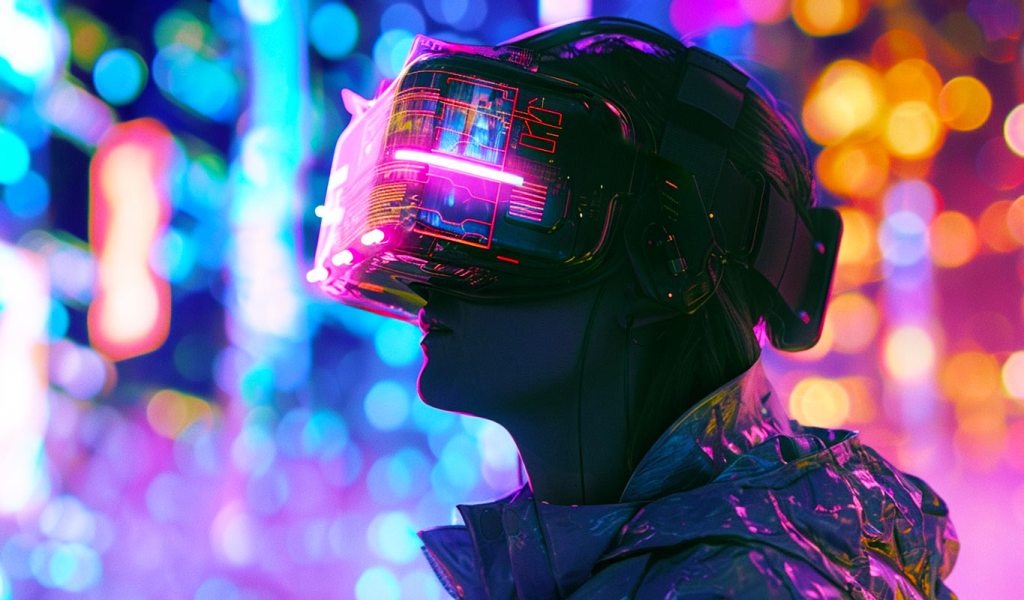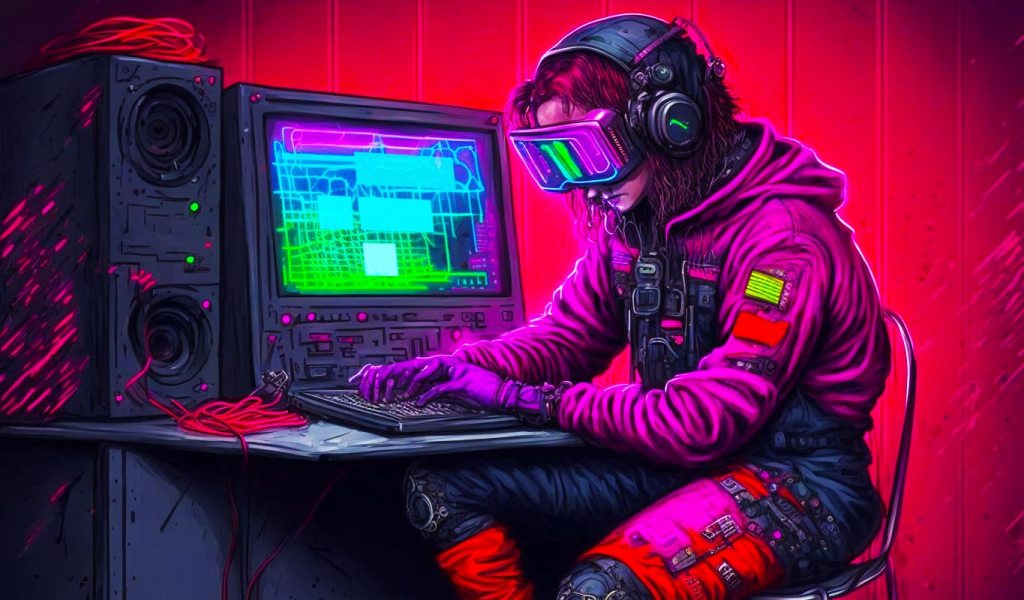
A cure for copyright ills? NFTs promise to empower creative economies

NFTs are not an immediate solution to all IP rights issues, but eventually they can give creators more power than they ever had.
If you’ve had anything to do with digital arts, digital assets, or both, in the last few months, it has been virtually impossible to escape the barrage of news about how nonfungible tokens, or NFTs, are changing the game for creative industries. From Kings of Leon dropping their new album as an NFT to digital artist Beeple closing a Christie’s auction with an eye-popping price tag on a piece of his work, the trend has been unfolding at a staggering pace.
Many believe that NFTs are not merely a flashy new medium for artistic work but a vehicle that can generate new efficiencies and redefine relationships between creators, their audiences, and traditional executives and of the music and arts industries.
Better management of intellectual property rights and streamlining the distribution of royalties are among the most frequently invoked use cases. Established copyright management bodies, such as the Italian Society of Authors and Publishers, are joining the movement and heading in the direction of blockchain IP registries, while musicians are putting shares of their work up for sale for investors to profit from the records’ subsequent commercial use. How viable are these solutions, and what roadblocks can their champions run into?
The quest for authenticity
One of the key challenges that the creators of digital content face is the ease with which a perfect digital copy of their creation can be produced at virtually no cost. Because a digital image or soundtrack can be instantly copied and distributed an infinite number of times, it’s challenging for creators to track how and by whom their work is used and, accordingly, to benefit from this usage.
NFTs’ main value proposition is that by creating a unique, blockchain-backed record of each unit of creative work, they can not just encode the sense of its authenticity and scarcity but also enable artists to lay down and enforce the rules around copyright transfer, usage and monetization. G-J van Rooyen, co-founder of blockchain content protection firm Custos Media Technologies, commented to Cointelegraph:
“First, NFTs allow us to securely trace the transfer of rights — in the same way as a Bitcoin payment securely traces the transfer of funds. Second, NFTs can provide perpetual support to creators. For example, an NFT could specify that creators should be rewarded each time an asset is resold at a higher value.”
Specifically, one notable improvement over the traditional world of IP rights protection that NFTs offer is automatic enforcement. Daniel Daboczy, CEO of technology firm Technicorum Holdings, explained to Cointelegraph that by leveraging the smart contracts that lay at their core, NFTs can empower artists to distribute royalties and protect intellectual property without having to seek legal recourse and enforcement.
In many cases, however, the relationship between smart contract-powered technology and existing legal frameworks can be less than straightforward.
What do NFT owners really own?
In most cases, ownership of an NFT does not entitle a person to ownership of the underlying work by default. Rather, it can be viewed as a digital certificate attesting that they own a unique, collectible version of it. Burr Eckstut, special counsel at law firm Covington & Burling LLP, further explained to Cointelegraph:
“NFTs are different from digital content in that there can only be one holder of a given NFT at a given time. NFTs do not, however, typically ‘contain’ the digital content and might not be linked to digital rights management technology that would prevent copying the digital content. The link between the NFT and content may even just be conceptual, but it can still have value as long as the NFTs are scarce.”
Gunther Sonnenfeld, CEO of digital ownership solutions provider RAIR Technologies, noted to Cointelegraph: “There’s really no intellectual property rights protection without digital rights management.” On its own, an NFT is merely a serial number, and an additional layer of functionality must be put in place in order to allow people to reshare the underlying asset while making sure that both the creator and the sharer get their cut.
There are different aspects of the creative work’s usage that NFTs’ smart contracts can be programmed to control. Perhaps the most rigorous option is gating the very ability to access the encoded content. William Honaker, IP and patent attorney at law firm Dickinson Wright, told Cointelegraph:
“If the NFT controls access, then it will enhance copyright protection. If the work is protected against copying and redistribution through the NFT and access is by, for example, a one-use code to view, then it would be protected beyond copyright.”
NFTs can also be used as licenses, whereby those who purchase them acquire the right to use the content for commercial or other purposes, but they do not get the ownership right.
Royalties and fractional ownership
In today’s creative industries, the bulk of value generated from digital art goes to intermediaries such as record labels and distribution platforms. Thanks to blockchain technology, the balance of economic power in this realm can soon shift in a direction more favorable to creators.
Gaurang Torvekar, CEO and co-founder of blockchain-powered workflow platform Indorse, told Cointelegraph: “Along with immutable proof around ownership and provenance of the assets, NFTs also make it possible for the buyers to have fractional ownership of them.”
This mechanism allows for unprecedented flexibility in terms of how copyright is leveraged. Edmund McCormack, founder and CEO of crypto-focused education platform Dchained, spoke to Cointelegraph on the matter:
“If a song is created by a group of artists and registered on the blockchain in the form of an NFT, each of them can claim a relevant fraction of this token, be it 90% or 1%. To gain profits for their creation, they can issue licenses as NFTs as well and sell them to interested parties while remaining the owners of the piece. Moreover, they can sell fractions of their rights to their followers and thus gain investments directly.”
Sonnenfeld added that he expects a variety of NFT-based monetization models beyond royalties to emerge as the market matures. These could include licensing, preferred subscriptions and data redistribution through proper identity management.
Relationship with copyright law
The legal side of many of the processes described above remains fuzzy, as the introduction of NFT-based mechanisms for IP rights management will have to be reconciled with the protections and enforcements that exist under current copyright law.
According to Lokesh Rao, CEO of NFT-based protocol Trace Network, recognition of asset ownership still must be agreed upon in the court of law, and unless NFTs are recognized as equal to a paper or digital certificate, the scope of implementation of this concept will be limited to digitally owned and consumed goods.
D’vorah Graeser, CEO of AI patent search tool KISSPlatform, commented to Cointelegraph: “The biggest bottleneck is that nearly all IP rights are registered rights — meaning that the rights holder needs to register with a government entity. This creates a public record in case of later questions or a dispute. It would be hard to create a similar situation with NFTs that all parties — specifically businesses holding the rights and the court system — could agree on.”
Graeser added that such reconciliation is not impossible, and ultimately some combination of NFTs, legal agreements and court enforcement would be very effective.
Covington & Burling’s Eckstut brought up a handful of other potential legal issues that could emerge in relation to securing copyright interests via NFTs. One is related to the “first sale doctrine” that generally prevents copyright owners from restricting (and therefore benefitting from) further sales of physical copies of their works — something that NFTs can potentially enable creators to do. Another concern is that, under current legislation, United States copyright can only be transferred using a written instrument — a standard unlikely to be met with the transfer of a digital token.
In sum, it’s apparent that incorporation of NFTs into the business of copyright protection on a large scale will require some years of court precedent, as well as modification of codes and statutes that govern intellectual property law.
Technological infrastructure
While technological solutions related to IP rights protection have existed in the blockchain space for years, most commentators who spoke to Cointelegraph on the matter agree that overall, the NFT sector is in the early days of its journey toward taking over the copyright arm of the creator economy.
W. Sean Ford, chief operating officer of blockchain platform Algorand, opined that the technology needed to power these assets and the economies being built around them must cater to a very specific set of needs, listing them for Cointelegraph:
“Simple tooling to create and launch NFTs, strong smart contracts to leverage NFTs for more complex applications, immunity to forking to ensure the original creation can not be replicated, low transaction fees for healthy participation, scalability to support billions of creative assets, and a low carbon footprint for sustainability of the communities these assets serve.”
Currently, a major issue is the fragmented landscape of NFT platforms designed to deliver royalty payments to artists. According to McCormack, royalty payments, in many cases, are only applicable to purchases on each separate platform. Yet, he noted that protocols offering scalable solutions are already emerging: “EIP-2981 could enable content creators to incorporate smart contracts, which automate the royalty payment process, directly into the NFT. The result would be that artists can receive royalties regardless of where the customer purchases the NFT.”
There is not much room for doubt that nonfungible tokens hold the potential to eventually upend the incumbent models of intellectual property rights management in creative industries. Yet it is also true that the integration is going to be neither seamless nor instantaneous, as multiple tensions that exist between the old systems and the NFTs will have to be resolved.
Go to Source
Author: Kirill Bryanov









